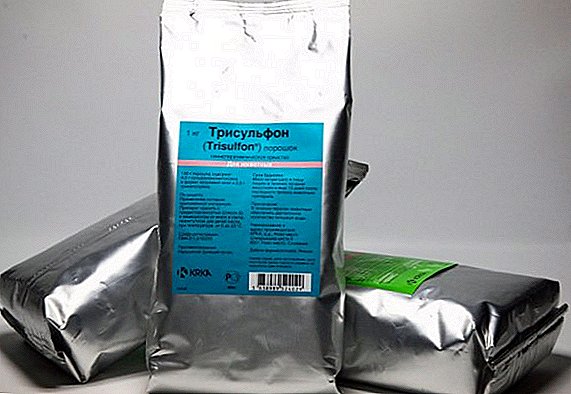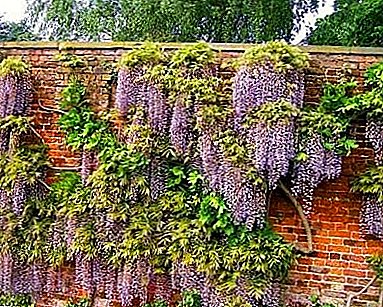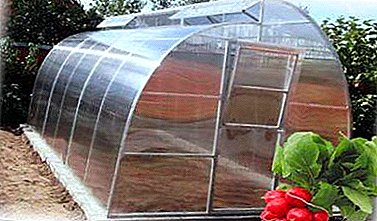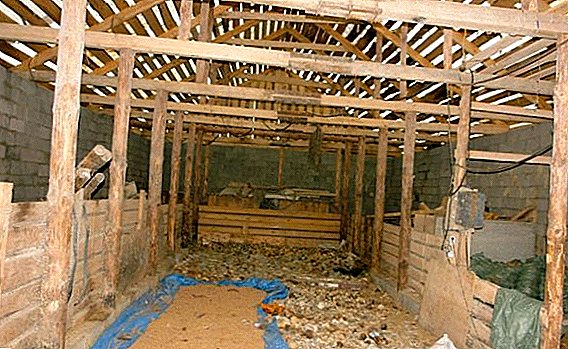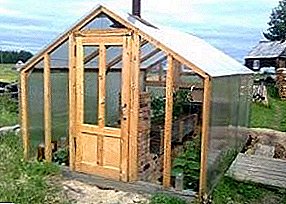
In a midland climate, growing vegetables has a number of difficulties. Outdoors, even the cultivation of spring seedlings often requires the use of at least a simple greenhouse.
And the desire to get two crops per season, and even more so year-round harvest, requires the construction of a heated greenhouse on the site.
Why heat the greenhouse?
Such a question may seem rhetorical, however, when deciding to invest in heating a greenhouse, the owner must be firmly aware of what results he is pursuing, and what advantages will be given by the invested forces and means.
 The most important factor is the possibility maintaining the optimum temperature and humidity in the greenhouse. Such an artificial microclimate allows you to significantly speed up the period of cultivation of seedlings and adult plants, increases the germination of seeds and protects the seedlings from the harmful effects of the external environment.
The most important factor is the possibility maintaining the optimum temperature and humidity in the greenhouse. Such an artificial microclimate allows you to significantly speed up the period of cultivation of seedlings and adult plants, increases the germination of seeds and protects the seedlings from the harmful effects of the external environment.- Heating a greenhouse allows you to grow any vegetable crops, regardless of the latitude of the site and time of year, even in the most severe frosts. Greenhouse allows you to increase the flowering season of ornamental crops, and grow even fragile tropical plants.
- When using heating, it is easy for the greenhouse owner to adjust the frequency of crops, and even their number.
- The factors listed above, in addition, significantly increase the profitability of the site and increase the profit, if the greenhouse will be used with a commercial orientation.
During the history of the operation of these garden buildings, many ways of heating them were invented, which can be divided according to several criteria. This article will not consider the method of natural heating using solar energy, since this method does not require the use of complex technical means.
 The main task with this method of heating is to choose the right place for the construction of the greenhouse, to use the most optimal form of the frame and to use light and heat reflecting dyes or materials in places of the lowest solar radiation.
The main task with this method of heating is to choose the right place for the construction of the greenhouse, to use the most optimal form of the frame and to use light and heat reflecting dyes or materials in places of the lowest solar radiation.
The rest of the gardener remains to hope that the number of sunny hours will be enough to maintain the optimum temperature in the greenhouse.
Other ways to maintain optimal temperature in a greenhouse are more complex.
Biological method
The simplest, and probably the oldest and most favored by gardeners, method of heating a greenhouse is biological, i.e. heating with the use of heat generated by biological materials when rotting. This method attracts site owners not only for its simplicity, but also for its cheapness.
In addition, when using this method, another goal is achieved - mineral fertilization of the soil occurs. The most diverse combinations of plant waste and manure, which have the ability to produce heat in reaction with air, often act as biologically active substances.
Plant substances also give good results. So, sawdust for 14 days is able to warm the soil to +20 ˚С, rotten bark for 120 days keeps heat in the range of + 20-25 ˚С.
 Heating a greenhouse with the use of technical means is more energy-intensive, but also more practical, as it eliminates the need for a constant change of biological mixtures in the structure, and also gives a much more stable performance, so necessary for the cultivation of a rich harvest.
Heating a greenhouse with the use of technical means is more energy-intensive, but also more practical, as it eliminates the need for a constant change of biological mixtures in the structure, and also gives a much more stable performance, so necessary for the cultivation of a rich harvest.
Methods of technical heating can be divided into a number of subspecies, depending on the energy sources used.
We are heated by electricity
Electricity is currently available in almost every corner of the country. Its cost may be higher than the cost of other energy sources, but in its favor they say ease of use, high efficiency, the ability to use economical heat sources.
- The simplest way to heat a greenhouse with electricity - use of fan heater. In his favor they say convenience, simplicity and cheapness. It does not require any re-equipment of the greenhouse - it is enough to bring the electric cable and put the heating device in the optimal place. At the same time, the movement of air does not allow moisture to accumulate on the walls, and the heat itself is evenly distributed.
Such heating is easy to do with your own hands. As a minus it should be noted the harmful effects on plants that will be in close proximity to the fan.
- Cable heating With electricity, it is also easy to use and has a good heat distribution combined with the ability to automatically control the temperature. However, its installation is far from being a simple enterprise and only the owner with certain special knowledge and skills can cope with it on his own. Either have to use hired labor.
- Warm greenhouse with infrared panels it is simple enough to organize, and it will allow to significantly reduce costs due to the high efficiency of these devices. In addition, the popularity of IR panels contributes to the proven research ability to increase the percentage of plant germination. The long life of such heat sources is also important - up to 10 years.
Water heating
 As the name implies, this method of heating a greenhouse uses water. The point here is that pipes are laid in the greenhouse, through which water circulates as a coolant.
As the name implies, this method of heating a greenhouse uses water. The point here is that pipes are laid in the greenhouse, through which water circulates as a coolant.
At the same time, water can be heated in several ways - using solid fuel boilers (coal-fired, firewood, peat, woodworking production waste, etc.), gas boilers and oil-fired boilers.
In some cases, the greenhouse can be connected to the central heating system of a residential building. The advantages of this type of greenhouse heating are many. These include the relative simplicity of the heating scheme, sufficient availability of materials, the ability to use the most affordable and cheapest type of fuel in a given area.
A handy owner can do this heating on his own. The disadvantages include the complexity of temperature control when using solid fuel boilers. Gas boilers give the best performance for maintaining an optimal environment.
Warm air
In this case, as can already be understood from the name, heated air acts as a heat carrier.
- It is quite often used in practice to use heating with the use of gas catalytic burners that heat the air in the greenhouse when burning natural or bottled gas. Cylinders are used in cases when heating is necessary for a short time, for example, in cases of frost.
- Another type of air heating is similar to water, only in this case, perforated polyethylene hoses are laid from the fuel boiler, through which warm air is fed into the greenhouse, heating the soil.
- And, finally, the heating of a greenhouse with the help of a good old stove. Despite the primitiveness, this method should not be written off. Its low cost, simplicity and efficiency speak for themselves.
Heated greenhouse with his own hands
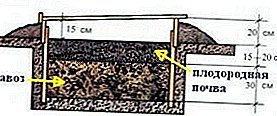 Biological heating. For his device is considered the ideal use of horse and cow manure, as they have the longest characteristics of heat. Vegetable mixtures are often used — 75% of the fallen leaves are mixed with manure, or 30% of the decomposed peat is added to 70% of manure and then treated with a solution of urea at a concentration of 0.6%. In the spring, before the biological mixture is placed in the greenhouse, it must be heated. To do this, she shovel and moisten with water or mullein.
Biological heating. For his device is considered the ideal use of horse and cow manure, as they have the longest characteristics of heat. Vegetable mixtures are often used — 75% of the fallen leaves are mixed with manure, or 30% of the decomposed peat is added to 70% of manure and then treated with a solution of urea at a concentration of 0.6%. In the spring, before the biological mixture is placed in the greenhouse, it must be heated. To do this, she shovel and moisten with water or mullein.Sometimes to accelerate the process using hot stones. After a few days, the process of heat release begins, as evidenced by the temperature rise to 50-60 ° C. After that, in the greenhouse, in place of the beds, a fertile layer with a thickness of a spade bayonet is removed. Then manure itself, or a mixture. If cow dung is used, then a layer of brushwood up to 10 cm thick should be placed on the sawdust, which will increase aeration. In the center is placed hotter manure, and along the edges - colder. Manure is paid at the rate of 0.3-0.4 cubic meters per 1 square meter of area.
After a couple of days, when the manure has settled, another portion should be added, which should be sprinkled with a thin layer of hydrated lime, which will enhance the reaction of heat generation and at the same time prevent the appearance of fungi. Then fertile soil returns to its place in the form of a layer with a thickness of 20-25 cm. Plants can be planted in the ground after several days.
- With stove heating First of all, it is necessary to determine the place where this heating appliance and chimney will be located, taking into account compliance with fire safety measures. In addition, it should be noted that the plants should not be located in the immediate vicinity of the furnace, because Radiated heat can have a detrimental effect on them. When installing the furnace, insulating materials should be used at the site of the foundation construction and adjacent greenhouse walls. The chimney pipe is usually displayed in such a way that its length in the greenhouse is maximum. This allows the best use of heat transfer. Needless to say, the products of combustion should not fall into the greenhouse, and in the room itself, you should consider measures to maintain optimum humidity and access of fresh air.
 Having decided to warm the greenhouse using electricity, first of all, work should be carried out on laying a separate power cable to the construction, which can withstand a load equal to the total power of the heating elements used.
Having decided to warm the greenhouse using electricity, first of all, work should be carried out on laying a separate power cable to the construction, which can withstand a load equal to the total power of the heating elements used.
In this case, it is necessary to use safe insulation and pull the cable to a separate packet switch. When installing heating elements in the greenhouse (fan heaters, infrared panels, heaters, etc.), their characteristics should be taken into account, indicated in the technical data sheets - power, heating area, radiation direction, etc.It is also worth considering that if a decision is made to use a cable as a heating element, work in an already constructed greenhouse will be quite laborious, since to lay the cable, it will be necessary to remove the top fertile layer of soil, create the necessary cushion for the cable and then return the soil to its place.
- Water or air heating A greenhouse may also require substantial labor. With his device will have to construct a place for the heating boiler, as well as the actual system of circulation of water or air. Before starting work, it is worthwhile to create a heating scheme in which to reflect the location and the required inclination of the circulation system, if necessary, to include a pump in the water heating circuit, if there is no possibility of natural circulation.
As a simpler solution, you can use the existing stove heating. In this case, a water tank is mounted on the stove, to which pipes with heated water circulating through it are brought.
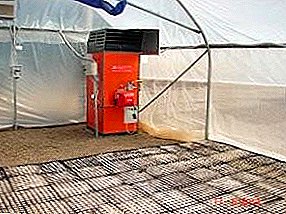 Gas heating to arrange is quite simple if you use gas cylinders. In this case, the explosion and fire hazard of such systems should be considered in case of violation of the rules for handling gas equipment. Therefore, when wiring gas hoses in a greenhouse, it is necessary to carefully check all joints and connections. If you want to use gas from the pipeline, you will have to obtain the appropriate permits from the regulatory authorities. As in the case of electric heaters, when placed in a greenhouse heaters operating on natural gas, should take into account their technical characteristics, that is, the heating area, the direction of flow of heated air.
Gas heating to arrange is quite simple if you use gas cylinders. In this case, the explosion and fire hazard of such systems should be considered in case of violation of the rules for handling gas equipment. Therefore, when wiring gas hoses in a greenhouse, it is necessary to carefully check all joints and connections. If you want to use gas from the pipeline, you will have to obtain the appropriate permits from the regulatory authorities. As in the case of electric heaters, when placed in a greenhouse heaters operating on natural gas, should take into account their technical characteristics, that is, the heating area, the direction of flow of heated air.
As can be seen from the above, greenhouse heating can be arranged in various ways. In this case, it is necessary to take into account the duration of the period when it is necessary to maintain the heat, dimensions and design of the room, availability and cost of energy sources. Only after that it is necessary to make the final decision on the application of a particular scheme.
A photo
You can look at the heating systems of greenhouses and greenhouses in the following photos:








 The most important factor is the possibility maintaining the optimum temperature and humidity in the greenhouse. Such an artificial microclimate allows you to significantly speed up the period of cultivation of seedlings and adult plants, increases the germination of seeds and protects the seedlings from the harmful effects of the external environment.
The most important factor is the possibility maintaining the optimum temperature and humidity in the greenhouse. Such an artificial microclimate allows you to significantly speed up the period of cultivation of seedlings and adult plants, increases the germination of seeds and protects the seedlings from the harmful effects of the external environment. Biological heating. For his device is considered the ideal use of horse and cow manure, as they have the longest characteristics of heat. Vegetable mixtures are often used — 75% of the fallen leaves are mixed with manure, or 30% of the decomposed peat is added to 70% of manure and then treated with a solution of urea at a concentration of 0.6%. In the spring, before the biological mixture is placed in the greenhouse, it must be heated. To do this, she shovel and moisten with water or mullein.
Biological heating. For his device is considered the ideal use of horse and cow manure, as they have the longest characteristics of heat. Vegetable mixtures are often used — 75% of the fallen leaves are mixed with manure, or 30% of the decomposed peat is added to 70% of manure and then treated with a solution of urea at a concentration of 0.6%. In the spring, before the biological mixture is placed in the greenhouse, it must be heated. To do this, she shovel and moisten with water or mullein. Having decided to warm the greenhouse using electricity, first of all, work should be carried out on laying a separate power cable to the construction, which can withstand a load equal to the total power of the heating elements used.
Having decided to warm the greenhouse using electricity, first of all, work should be carried out on laying a separate power cable to the construction, which can withstand a load equal to the total power of the heating elements used. Gas heating to arrange is quite simple if you use gas cylinders. In this case, the explosion and fire hazard of such systems should be considered in case of violation of the rules for handling gas equipment. Therefore, when wiring gas hoses in a greenhouse, it is necessary to carefully check all joints and connections. If you want to use gas from the pipeline, you will have to obtain the appropriate permits from the regulatory authorities. As in the case of electric heaters, when placed in a greenhouse heaters operating on natural gas, should take into account their technical characteristics, that is, the heating area, the direction of flow of heated air.
Gas heating to arrange is quite simple if you use gas cylinders. In this case, the explosion and fire hazard of such systems should be considered in case of violation of the rules for handling gas equipment. Therefore, when wiring gas hoses in a greenhouse, it is necessary to carefully check all joints and connections. If you want to use gas from the pipeline, you will have to obtain the appropriate permits from the regulatory authorities. As in the case of electric heaters, when placed in a greenhouse heaters operating on natural gas, should take into account their technical characteristics, that is, the heating area, the direction of flow of heated air.